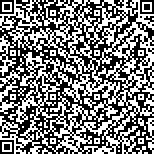王军,周丽杰,郭倩玉,等.脑性瘫痪儿童头颅MRI表现与其临床特点分析[J].中华物理医学与康复杂志,2022,44(9):800-804
扫码阅读全文

|
| 脑性瘫痪儿童头颅MRI表现与其临床特点分析 |
|
| |
| DOI:10.3760/cma.j.issn.0254-1424.2022.09.008 |
| 中文关键词: 脑性瘫痪 核磁共振成像 临床特征 儿童 相关性 |
| 英文关键词: Cerebral palsy Magnetic resonance imaging Clinical features Children Correlation analysis |
| 基金项目:河南省重点研发与推广专项(202102310359) |
|
| 摘要点击次数: 4574 |
| 全文下载次数: 5450 |
| 中文摘要: |
| 目的 探讨脑性瘫痪(脑瘫)儿童头颅核磁共振成像(MRI)与脑瘫分型、粗大运动功能分级、脑瘫合并症间的关系。 方法 选取2020年10月至2021年3月期间在郑州大学第三附属医院儿童康复科诊治的325例脑瘫儿童作为研究对象,上述患儿均给予头颅MRI检查,并采用粗大运动功能分级系统对其粗大运动功能水平进行评级。采用单因素、多因素Logistic回归方法对患儿头颅MRI异常表现与粗大运动功能分级结果进行相关性分析;采用卡方检验分析MRI异常结果与脑瘫合并症间的关系。 结果 本研究入选脑瘫患儿的头颅MRI呈现多种异常改变,通过多因素Logistic回归分析发现脑发育不良(OR=8.530,95%CI:5.031-14.330)、脑室扩大(OR=4.611,95%CI:1.327-10.297)、脑室周围白质软化症(PVL)(OR=4.313,95%CI:2.084-8.153)、丘脑异常信号(OR=6.372,95%CI:3.160-11.175)、缺血缺氧性脑病后变化(OR=7.249,95%CI:2.354-13.642)均与患儿粗大运动功能损伤严重程度间存在显著相关性(P<0.05)。通过卡方检验发现PVL患儿多合并视力障碍(62.1%),胼胝体变薄患儿多合并智力低下(14.0%),丘脑异常信号患儿多合并听力障碍(66.7%)及语言障碍(30.8%)。 结论 本研究入选患儿头颅MRI结果与其脑瘫分型、粗大运动功能评级、脑瘫合并症间均具有显著相关性,可用于脑瘫儿童早期诊断及预后评估,为临床制订康复计划提供参考资料。 |
| 英文摘要: |
| Objective To document the clinical features of children with cerebral palsy (CP) using magnetic resonance imaging (MRI). Methods The gross motor functioning of 325 children diagnosed as having CP was graded using the gross motor function classification system (GMFCS). The GMFCS grades were correlated with MRI results in univariate and multivariate logistic regression analyses. The significance of any relationship between the MRI results and co-morbidities was tested using chi-squared tests. Results Cerebral dysplasia, cerebroventricular enlargement, periventricular leukomalacia (PVL), abnormal signals in the thalami, and morphological changes after hypoxic ischemic encephalopathy were all found to be significantly correlated with GMFCS grading. Moreover, the chi-squared tests indicated that PVL children, children with thinning of the corpus callosum and/or abnormal signals in the thalami were significantly more likely to have visual, auditory or speech impairment complications and/or mental retardation. Conclusions The findings from MRI correlate well with types of CP, GMFCS grades and co-morbidities among CP children. MRI can be an effective tool for early diagnosis and prognosis of CP in children, indicating needs for clinical rehabilitation. |
|
查看全文
查看/发表评论 下载PDF阅读器 |
| 关闭 |